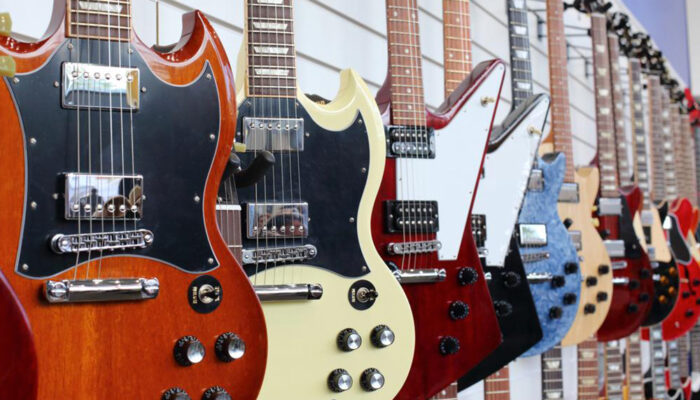Three basic types of electric guitars
The need for an amplification in musical instruments in the early half of the twentieth century, led to the invention of the magnificent electric guitar. Electric guitars have a wide range. Thanks to the little quirks and variations in pickups, bridges, fret sizes, neck radii, tone woods and tuners, every strum plays and sounds hugely different.

Hollow body guitars
These originated in the 1930 and had an electrified hollow roundish body. Hollow body guitars are broadly a blend of acoustic and electric as they have both a sound box and a couple of electric pickups. This however is not anything like an acoustic-electric guitar (which is mainly an acoustic guitar with additional pickups or other modifiers added by the player or the makers). The tunes that this kind of a guitar produces are mainly clean and warm. Genres like pop, folk and blues suit hollow body guitars the best.
Semi-hollow body
Introduced by Gibson in 1958, these guitars had a solid block of wood running through the center of the body. They also had double cutaways and strikingly thinner bodies. This structure created ‘hollow’ wings on the side that created harmonic, warm and soothing music. These were majorly created so that they could compete with the blaring horns in noisy places. These guitars majorly suit jazz guitarists and country music singers. These guitars are generally lighter than most of their electric counterparts.
Solid body guitar
Solid body guitars are made without sound boxes and rely totally on electric pickup systems that receive vibrations directly. These electric guitars are the most versatile and are instrumental in creating new genres of music like heavy metal, country music, blues and rock. These guitars have their bodies made of woods like ash, alder maple, mahogany, rosewood and the like. The most common type of solid body guitar is made up of ash and alder.
All these guitars have their characteristics features and nuances that make sense to individual players based on their sensibility, style and genres. However, to a novice these differences may be insignificant. If tweaks and nuances fancy you, go ahead and try your hand at learning any one of the guitars and experience the difference for yourself!





